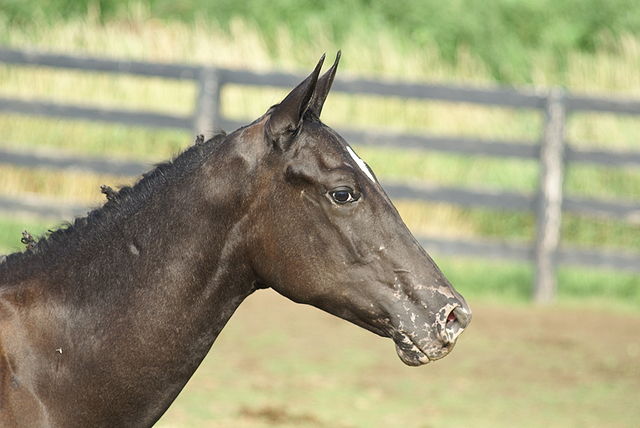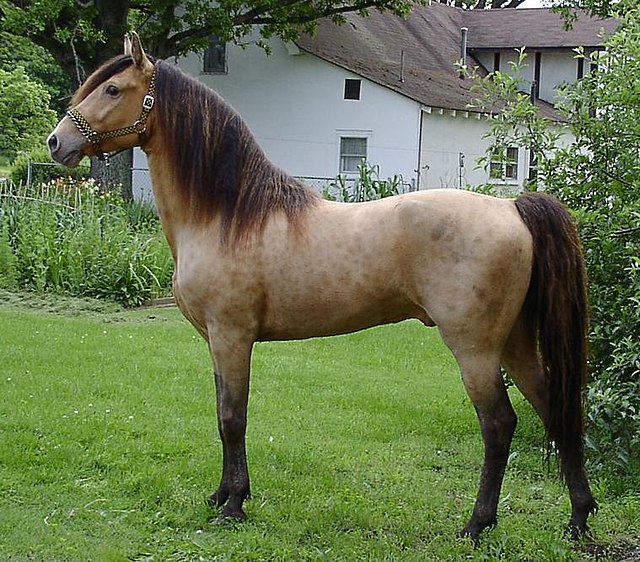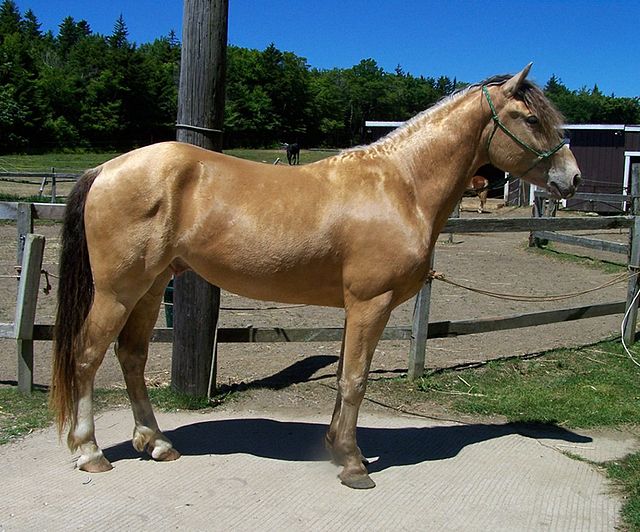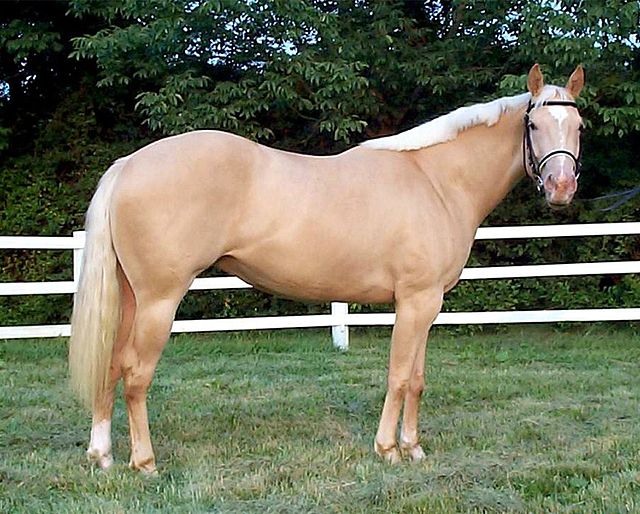Mottle is a pattern of irregular marks, spots, streaks, blotches or patches of different shades or colours. It is commonly used to describe the surface of plants or the skin of animals. In plants, mottling usually consists of yellowish spots on plants, and is usually a sign of disease or malnutrition. Many plant viruses cause mottling, some examples being:Tobacco vein mottling virus
Bean pod mottle virus
This Appaloosa horse shows mottling around its mouth and nostrils. In this particular case, it is a normal hereditary trait linked to a spotted coat color pattern and not a sign of disease.
Flecktarn mottle camouflage
The champagne gene is a simple dominant allele responsible for a number of rare horse coat colors. The most distinctive traits of horses with the champagne gene are the hazel eyes and pinkish, freckled skin, which are bright blue and bright pink at birth, respectively. The coat color is also affected: any hairs that would have been red are gold, and any hairs that would have been black are chocolate brown. If a horse inherits the champagne gene from either or both parents, a coat that would otherwise be chestnut is instead gold champagne, with bay corresponding to amber champagne, seal brown to sable champagne, and black to classic champagne. A horse must have at least one champagne parent to inherit the champagne gene, for which there is now a DNA test.
Champagne coloration is created by a dilution gene.
Classic champagne, black base diluted by champagne gene.
Amber champagne, bay base diluted by champagne gene.
Gold champagne, chestnut base diluted by champagne gene. Note similarity to palomino, but distinguished by mottling around nose






